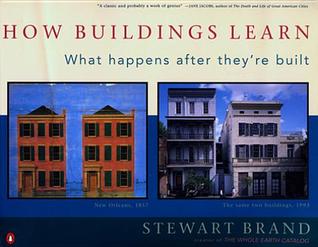More on this book
Community
Kindle Notes & Highlights
Seeking to be anybody’s house it becomes nobody’s.
The overall rule is always “Fit in.” It is never “Become interesting.”
As a youth I regarded building codes as the embodiment of all that was unoriginal and constricting in society. Later I learned their value.
“Earthquakes don’t kill people. Buildings do.”
Most building code systems are a manifestation of the whole community learning.
The codes often force builders and dwellers to act against their short-term interests,
This is an old and interesting problem in organizational learning. How do people learn to do cheap problem-prevention instead of expensive problem-cure?
codes established minimal standards, and minimal standards sanctify mediocrity. Mediocre builders can undersell good builders.
At their worst, code enforcers block creativity and defy reason, answerable to remote abstractions that have nothing to do with the present case or opportunity.
One of the major features of the ongoing life of any building is the hide-and-seek between remodelers, both amateur and professional, and the enforcers of codes—the building inspectors.
The result is a mixed bag. Certainly more constant adjustment to buildings comes from all this informality, but every carpenter I’ve talked to complains that the thing they most dread in any remodeling job is shoddy prior work done on the sly and not up to code—“cob work done by some handyman.” They contract to fix a warped bathroom floor and find they have to completely redo the plumbing, wiring, walls, and floor joists because earlier slapdash work put in hazardous wiring and leaky, rot-producing pipes.
Communities that want their built environment to improve over time would do well not to punish remodeling work.
Small lots give greater individual control and thus greater variety, and they encourage more pedestrian activity.
Garreau defines master planning there as “that attribute of a development in which so many rigid controls are put in place, to defeat every imaginable future problem, that any possibility of life, spontaneity, or flexible response to unanticipated events is eliminated.”
American planners always take inspiration from Europe’s great cities and such urban wonders as the Piazza San Marco in Venice, but they study the look, never the process.
That is the essence of good urban design—respect for what came before.”
Quelling change, zoning quells life.
What makes homeowners’ associations so viciously conservative?
(Americans move every eight years, on average),
Any improvements made are for the imaginary next buyers, not themselves.
Thus they insist on blitzkrieg construction schedules, and then they shovel in the tenants to get some rent flowing. The result: instant, shallow, flashy buildings with no adaptivity and no investment for the long term.
“The money is wrong in most buildings, and it’s crucial. There should be more in basic structure, less in finish, more in maintenance and adaptation. Once a building heads downhill, you lose motivation to fix it. You have to maintain a steady flow of money into a building, and mortgages skim that.”
In Japan and Germany—nations highly regarded and highly rewarded for taking the long view—mortgages are commonly written to amortize over 100 years.
Japan further discourages commoditization of houses with tax laws that punish rapid purchase and sale.
Two out of every three dollars spent on the purchase of the building go into paying interest—
The building can’t learn much with all those shock treatments.
Nearly everything about real estate estranges buildings from their users and interrupts any form of sustained continuity.
The “real” in “real estate” derives from re-al—“royal”—rather than from res—“thing”—which is the root of “reality.”
a dollar gains its time-and-space binding power from having no history, and the dollar wins.
Monetization frees from history by destroying history.
The opposite strategy is much surer, because the errors are piecemeal and correctable. When you proceed deliberately, mistakes don’t cascade, they instruct.
‘oikonomia’
‘chrematistics.’
Oikonomia, by contrast, is the management of the household so as to increase its use value to all members of the household over the long run.”
Rehabilitation of an old building may be expensive, but it’s still significantly less than comparable new construction.
The rehab work often can proceed by stages, while part of the building is still profitably occupied, and it can take less time than new construction.
“FACADISM” is the dirty word preservationists use for projects that save the illusory fronts of old buildings to mask entirely new construction.
The Improviser’s Standards would read: “Mess with the building as needed until it works.”)
When a building designed for one purpose is put to a completely different use, its value deepens,
Where does that leave design truisms like “Form follows function”? Completely invalidated.
preservationists encourage the leaving of “hidden treasures” for later remodelers to find,
Adaptive use is the destiny of most buildings, but the subject is not taught in architectural schools.
The subject would not be how to make new buildings look like old ones. It would be: how to design new buildings that will endear themselves to preservationists sixty years from now.
The wisdom acquired looking backward must be translated into wisdom looking forward.
No wonder people get in a permanent state of denial about the need for building maintenance. It is all about negatives, never about rewards. Doing it is a pain. Not doing it can be catastrophic. A constant draining expense, it never makes money. You could say it does save money in the long run, but even that is a negative because you never see the saving in any accountable way.
“Preservation IS maintenance.”
The sequence of effects of deterioration on ordinary buildings has never been formally studied—a curious lapse, considering the massive capital loss involved—
Most buildings you can expect to require complete refurbishing from eleven to twenty-five years after construction.


